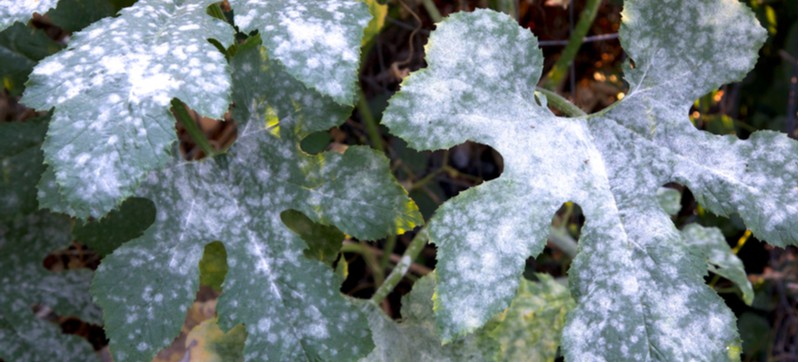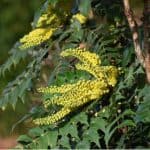Last updated on April 27th, 2022
Our site is reader supported, this means we may earn a small commission from Amazon and other affiliates when you buy through links on our site.
The Mahonia x media ‘Charity’ is a larger variety in comparison to most other types of Mahonia. This media ‘Charity’ variety reaches an ultimate height of around 400cm with an equal spread of around 400cm, which is just over a very impressive 13 feet. The good news is it’s not particularly fussy about where it is planted and will grow well in most soils as long as they are well-draining. It does prefer a full sun or semi-shaded position in a sheltered or exposed position although it’s best planted so that it’s not exposed to cold drying winds because they can suffer from windburn.
The Mahonia x media ‘Charity’ is grown for the same reason as most Mahonia shrubs, the attractive and rich green foliage, and the spiked yellow winter flowers that provide much-needed winter colour. The foliage is made up of long leaves that have between 5 and 20 leaflets depending on how mature the plant is.
They are grown for their year-round attractive spiked foliage and yellow flowers
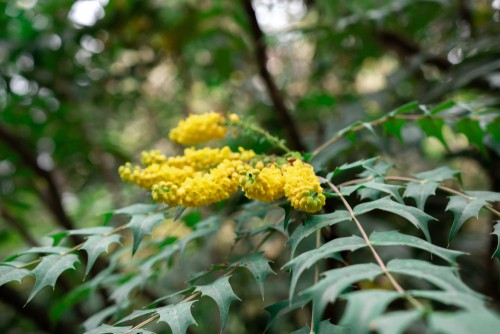
As an evergreen shrub, you get leaves all year round, with bright green shades from late autumn through winter at which point they are accented on top by stalks of bright yellow flowers. The bright yellow flowers shoot out of the ends, although if you are growing your Mahonia in a pot they might shoot out of the middle of the plant. Eventually, the yellow flowers give way to purple fruit.
They prefer full sun or semi-shaded positions
This is one of the larger varieties and it can reach an eventual height of approximately 400cm (13ft) in height, so plant for the eventual size and allow it plenty of space to grow. They are very strong shrubs which means they’ll grow in just about any soil type. They do best if you give them full sun or semi-shade, however, if you only have a shaded area in which to cultivate them, they will survive just fine. The plants in the shade, however, tend to be a bit leggy because they are searching for the light and will reach out to find it.
Ideal for forming hedging and screening
It’s recommended that you use these particular varieties to create a screen if you want a screen around your garden or around the perimeter of your property. Their tall, bushy nature fills in space very well. The leaves are also sharp with spikes on them which helps to deter intruders and are a great alternative to other prickly hedging plants such as Berberis, Pyracantha and Hawthorn.
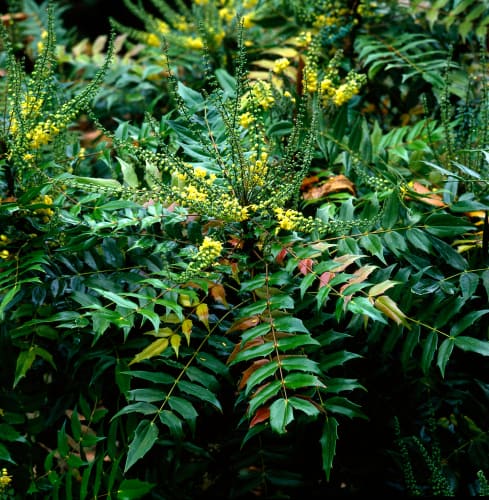
How to plant Mahonia x media ‘Charity’ shrubs
Add bone meal when planting and water well
If you have an x media ‘Charity’ plant it’s recommended that you dig a hole slightly larger than the rootball itself and mix in a little bone meal or fish blood and bone and soak the root ball in water for 20 minutes before you put the plant directly in the ground. The bone meal will help to promote new root growth to give it the best start possible.
Because of their size, it’s not recommended that you move the plant once it has been planted, so be sure to find an area in your garden that is going to serve as the permanent home. If for some reason your Mahonia is not doing well, you can move it but you should only do it when the plant is in dormancy, which is usually between the end of October to the beginning of February for most evergreen shrubs including Mahonias.
After Care
Mahonias are very strong and if left to their own devices they will do quite well. However, once it is planted, it will benefit from mulching during the winter, especially if you live in an area of the UK with very severe frost, you will usually find such weather further up the country, in the North.
Pruning
Mahonia doesn’t need regular pruning, however, you should prune your Mahonia to get rid of damaged or diseased branches, or to simply maintain its structure and shape early on. After which, we highly recommend you should also apply mulch around the roots for further protection.
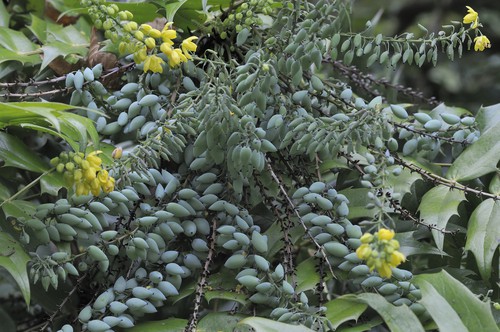
Similarly, a Mahonia is best if left unpruned but there are sometimes when you need to prune it because of diseased branches. If you have an established plant that is looking a little bare at the bottom with long branches reaching outwards, you can prune those branches to help encourage new growth along the bottom.
You can also prune branches to allow more light to hit the middle of the plant in the spring, in order to encourage new growth. Long branches that are bare can be pruned as well to encourage new growth.
Dealing with mildew and rust
Mahonias are generally pest-free so you don’t have to worry about pests, however, they can suffer from fungal infections, most commonly rust and powdery mildew. If you notice these on the leaves of your plants, treat them with a fungicide immediately, remove the worst affected leaves and burn them.
